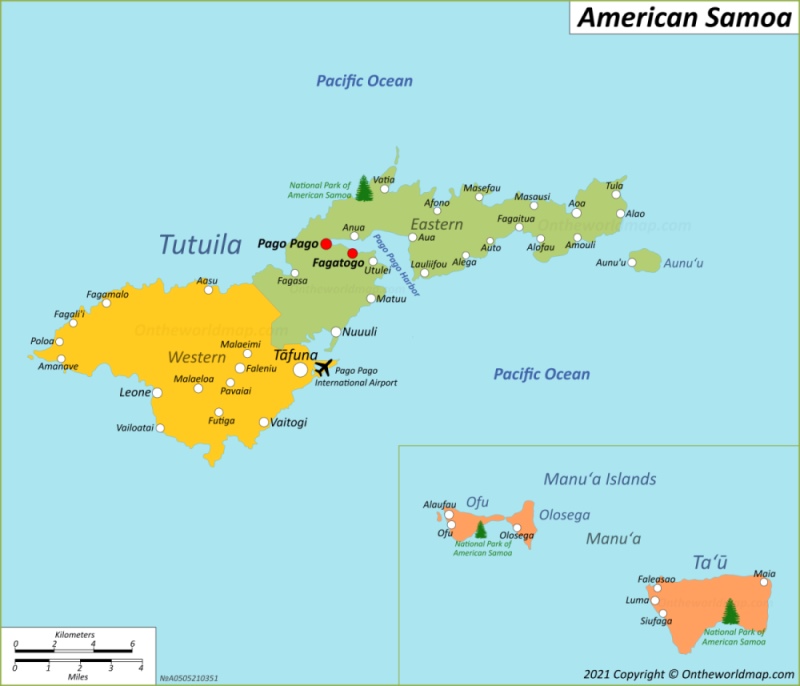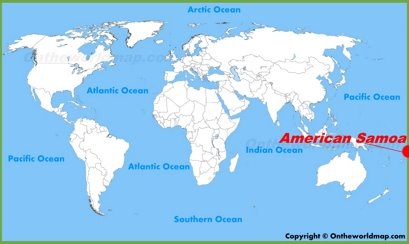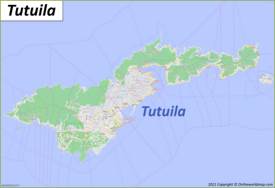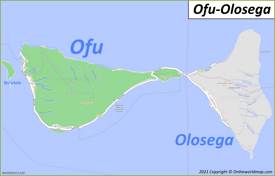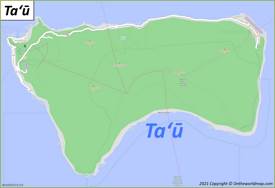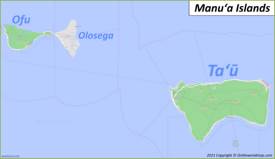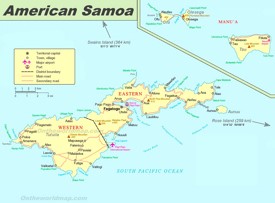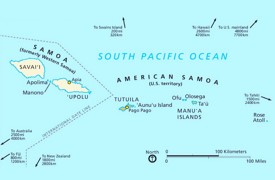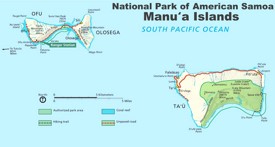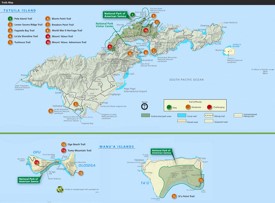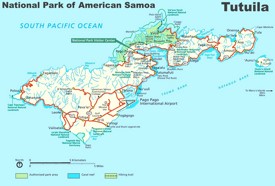American Samoa Map
Description:
This map shows districts, district capitals, cities, towns, islands, airport and national park in American Samoa.
Size: 1600x1371px / 389 Kb
Author: Ontheworldmap.com
You may download, print or use the above map for educational, personal and non-commercial purposes. Attribution is required. For any website, blog, scientific research or e-book, you must place a hyperlink (to this page) with an attribution next to the image used.
Online Map of American Samoa
About American Samoa
American Samoa is an unincorporated territory of the United States located in the South Pacific Ocean, southeast of Samoa and west of the Cook Islands. It consists of five main islands - Tutuila, Aunuu, Ofu, Olosega, and Taʻū - and two coral atolls, Swains Island and Rose Atoll. The total area of the territory is about 200 square kilometers (77 sq mi).
Pago Pago, located on Tutuila Island, serves as the capital and largest urban center. This port city is the political, economic, and cultural center of the Territory.
Tourism in American Samoa remains relatively underdeveloped compared to other Pacific destinations. Nevertheless, the territory offers unique attractions for visitors interested in natural beauty and cultural experiences.
Covering parts of Tutuila, Ofu, and Ta'u Islands, American Samoa National Park provides opportunities for hiking, wildlife watching, and experiencing traditional Samoan culture. The park preserves tropical rainforests, coral reefs and native animal species, providing a glimpse of the region's biodiversity. It also hosts cultural events and traditional rituals such as the ava ceremony, allowing you to experience Samoan heritage.
Today, American Samoa retains a unique political status as an unincorporated territory. Its residents have U.S. citizenship, but are not full citizens, and elect a non-voting delegate to the U.S. House of Representatives.
The Territory's economy relies heavily on tuna canning, government employment, and remittances from Samoans abroad. American Samoa continues to balance traditional Samoan culture with modern influences, overcoming challenges related to economic development, environmental sustainability, and political representation.
The Facts:
Sovereign state: United States.
Capital: Pago Pago.
Area: 77 sq mi (200 sq km).
Population: ~ 44,000.
Islands: Tutuila, Manuʻa Islands, Ofu-Olosega, Taʻū, Aunu‘u, Swains, Rose.
Towns and Villages: Tāfuna, Pago Pago, Fagatogo, Fagamalo, Maloata, Fagali‘i, Poloa, Amanave, Failolo, Agugulu, Utumea West, Se‘etaga, Nua, Afao, Asili, Amaluia, Leone, Auma, Puapua, Aasu, Aoloau, Malaeloa, Ituau, Futiga, Taputimu, Vailoatai, Vaitogi, Ili‘ili, Tafuna, Pava‘ia‘i, Faleniu, Mapusagafou, Mesepa, Malaeimi, Fagasa, Nu‘uuli, Faganeanea, Matu‘u, Fatumafuti, Faga‘alu, Utulei, Fagatogo, Pago Pago, Satala, Anua, Atu‘u, Leloaloa, Aua, Vatia, Alao, Tula, Onenoa, Aoa, Sa‘ilele, Masausi, Masefau, Afono, Lauli‘i, Aumi, Alega, Avaio, Auto, Amaua, Utusia, Faga‘itua, Pagai, Pagai, Alofau, Amouli, Auasi, Utumea East, Aunu‘u, Ofu, Olosega, Sili, Si‘ufaga, Luma, Faleasao, Maia, Leusoali‘i, Taulaga, Etena.
Districts: Western, Eastern and Manu‘a.
Counties: Lealataua, Fofo, Leasina, Tualatai, Tualauta, Itu‘au, Ma‘oputasi, Vaifanua, Sua, Sa‘ole, Ofu, Olosega, Ta‘ū, Faleasao, Fitiuta.
Official language: English, Samoan.
Currency: United States dollar (USD).
Driving side: right.
Calling code: +1-684.
Internet TLD: .as.
Time zone: UTC−11:00 (SST).
Website: www.AmericanSamoa.gov.
Google Map of American Samoa
Geography of American Samoa
Geographically, American Samoa is a rugged volcanic landscape characterized by steep mountains, lush rainforests and coastal plains. The volcanic origin of the islands has given rise to their dramatic topography, with the highest point, Mount Lata on Ta'u Island, reaching 966 meters.
The islands enjoy a tropical climate with warm temperatures and high humidity all year round. The rainy season, from November to April, brings significant rainfall and occasional cyclones, while the dry season, from May to October, offers more stable weather conditions.
Brief History of American Samoa
Historically, Polynesians first settled the islands of Samoa about 3,000 years ago, forming a distinctive culture and social structure here. European explorers reached the islands in the 18th century, followed by missionaries and traders in the 19th century. In 1899, the Tripartite Convention divided the Samoan Islands between Germany and the United States, with the latter receiving the eastern islands, known today as American Samoa.
The United States officially established its presence in 1900, when local chiefs signed a treaty of cession. American Samoa remained under the administration of the U.S. Navy until 1951, when the Department of the Interior assumed responsibility. In 1977, the people of American Samoa gained the right to elect their own governor and legislature, a significant step toward self-government.
U.S. Maps
Cities of USA
States of USA
States of USA

